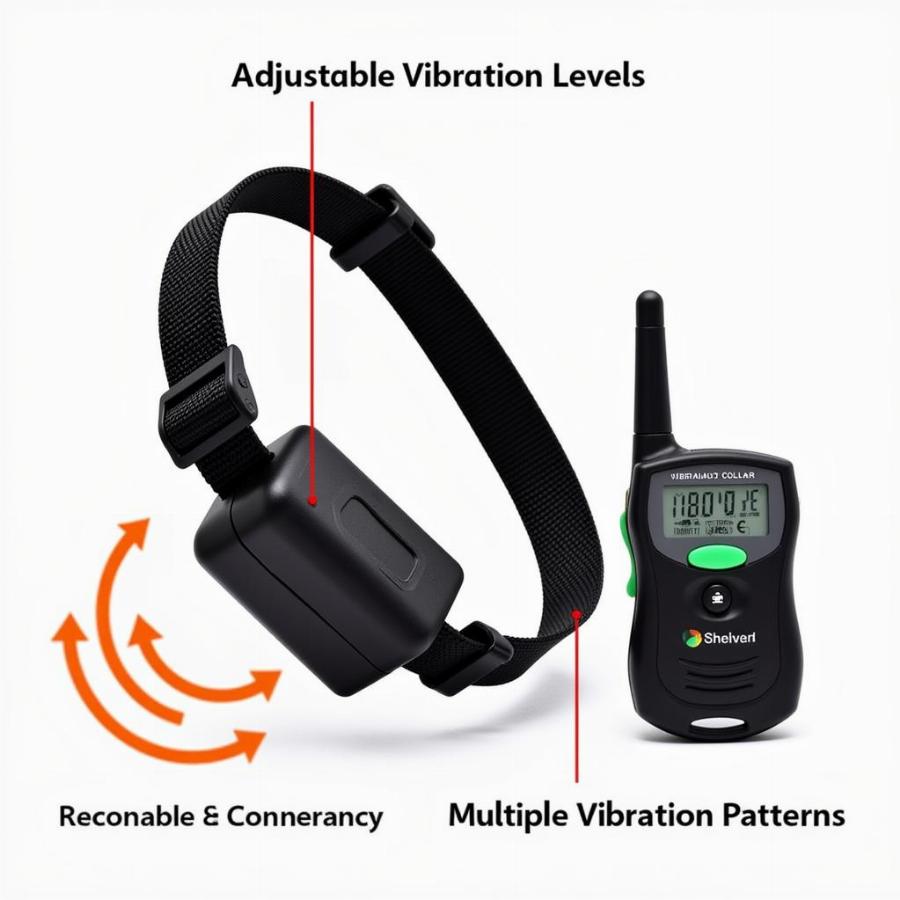Vibrating dog collars are a popular training tool, especially for deaf dogs. They offer a gentle and effective way to communicate cues without relying on sound. If you’re considering a vibrating dog collar for your deaf dog, or simply want to learn more about them, this guide will provide you with everything you need to know, from choosing the right collar to effective training techniques. We’ll explore the benefits, address common concerns, and empower you to make the best decision for your furry friend.
Understanding the Needs of a Deaf Dog
Deaf dogs experience the world differently. They rely heavily on visual cues and body language. This can make traditional training methods challenging. A vibrating dog collar provides a clear, consistent signal that your dog can easily learn to associate with specific commands. This can significantly improve communication and strengthen your bond. It’s important to remember that a vibrating collar is not a punishment tool. It’s a communication device that helps bridge the gap created by hearing loss. Do deaf dogs bark? Yes, they can, but they may not be able to control the volume or frequency.
Choosing the Right Vibrating Dog Collar
Not all vibrating dog collars are created equal. Consider factors like the size and weight of your dog, the intensity of the vibration, and the range of the remote. Look for collars with adjustable vibration levels to find the perfect setting for your dog’s sensitivity. Some collars offer multiple vibration patterns, which can be helpful for differentiating between commands. Waterproof and rechargeable collars are also convenient features to consider.
 Vibrating Dog Collar with Remote
Vibrating Dog Collar with Remote
Training with a Vibrating Dog Collar
Start slowly and positively. Introduce the collar gradually, pairing the vibration with a visual cue or hand signal. Reward your dog with treats and praise when they respond correctly. Keep training sessions short and fun to maintain your dog’s engagement. Consistency is key. Use the same vibration pattern for each command, and be patient as your dog learns the associations. Avoid using the collar to startle or punish your dog. Remember, it’s a tool for communication and positive reinforcement. How do you know if your dog is deaf? There are several signs, including unresponsiveness to sounds and increased reliance on visual cues.
Addressing Common Concerns About Vibrating Collars
Some owners worry that vibrating collars are cruel or uncomfortable. However, when used correctly, they are a gentle and humane training method. The vibration is similar to the buzz of a cell phone, and most dogs quickly adapt to the sensation. It’s important to choose a collar with adjustable intensity to ensure your dog’s comfort. Avoid using the collar for extended periods or at excessively high vibration levels. If you’re unsure about using a vibrating collar, consult with a veterinarian or professional dog trainer.
Beyond Basic Commands: Expanding Your Training
Once your dog has mastered basic commands, you can use the vibrating collar for more advanced training, such as recall and off-leash control. The collar can be a valuable tool for keeping your deaf dog safe in potentially dangerous situations. It’s a way to communicate quickly and effectively, even at a distance.
how do you know if your dog is deaf
Expert Insights on Vibrating Collars
Dr. Emily Carter, a certified veterinary behaviorist, shares her perspective: “Vibrating collars can be a game-changer for deaf dogs and their owners. They offer a clear and consistent way to communicate without relying on auditory cues. This can significantly improve a dog’s training, socialization, and overall quality of life.” Another expert, renowned dog trainer Mark Johnson, adds: “I’ve seen firsthand how vibrating collars can transform a deaf dog’s behavior. They empower owners to connect with their dogs in a meaningful way, fostering a strong bond built on trust and understanding.”
Conclusion
Vibrating dog collars offer a valuable tool for training and communicating with deaf dogs. They provide a gentle and effective way to bridge the communication gap and strengthen the bond between you and your furry friend. By choosing the right collar and implementing positive training techniques, you can empower your deaf dog to live a happy, fulfilling life. Remember, a vibrating dog collar is not a substitute for love, patience, and understanding, but it can be a powerful tool in your training arsenal.
FAQ
- Are vibrating collars safe for deaf dogs? Yes, when used correctly, they are a safe and humane training method.
- How long does it take to train a deaf dog with a vibrating collar? It varies depending on the dog and the consistency of training, but most dogs learn quickly.
- Can I use a vibrating collar on a hearing dog? Yes, but it’s typically more effective for deaf or hard-of-hearing dogs.
- What are the alternatives to vibrating collars for deaf dogs? Hand signals, visual cues, and leash training are common alternatives.
- How do I choose the right vibration intensity for my dog? Start with the lowest setting and gradually increase until you find a level your dog responds to comfortably.
- Can a vibrating collar be used for punishment? No, it should only be used for communication and positive reinforcement.
- Where can I buy a vibrating dog collar? Pet stores and online retailers offer a wide selection of collars.
Related Articles and Questions
- What other training tools are helpful for deaf dogs?
- How can I socialize a deaf dog?
- What are the common health concerns for deaf dogs?
Beaut Dogs is your go-to resource for all things dog-related, offering expert advice and reliable information on a wide range of breeds and care topics. When you need expert guidance, reach out to us via Email at [email protected] for detailed and accurate answers. Beaut Dogs is committed to providing helpful content to support you in giving your canine companion the best possible care. Visit us at https://beautdogs.com to explore our extensive resources and discover more about the wonderful world of dogs.